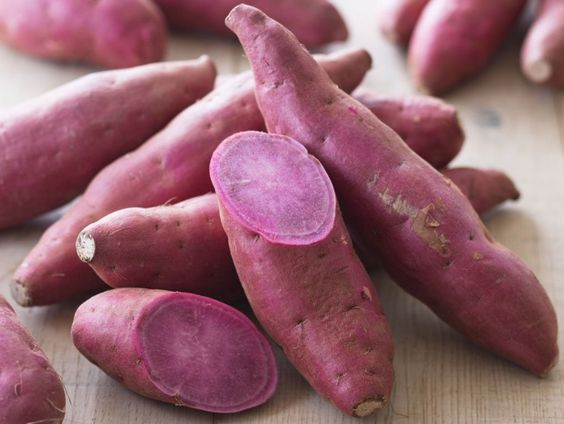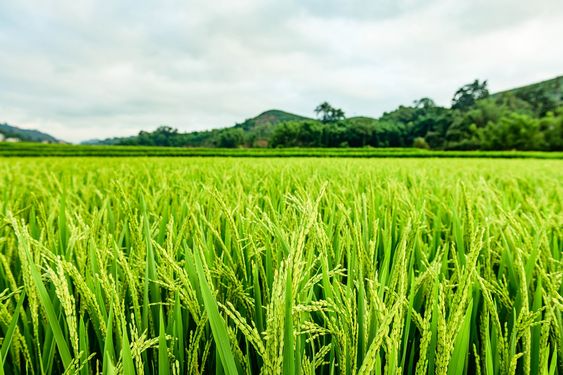Smart Sweet Potato Cultivation in Indonesia: A Guide to Maximizing Yields
Sweet Potato Cultivation, a nation where fertile lands meet a rich agricultural heritage, has long cultivated a diverse range of crops. Among these, the humble sweet potato stands out for its versatility, nutritional value, and resilience. In recent years, however, the agricultural sector has embraced innovation, paving the way for Smart Agriculture practices. This article explores the intersection of these two trends, guiding Indonesian farmers towards incorporating smart technologies for successful sweet potato cultivation.
Contents
- 1 Introduction to Smart Agriculture and its Benefits for Sweet Potato Cultivation
- 2 Implementing Smart Practices for Sweet Potato Cultivation in Indonesia
- 3 Considerations and Challenges for Smart Agriculture Adoption in Indonesia
- 4 Conclusion: Embracing a Smart Future for Indonesian Sweet Potato Cultivation
Introduction to Smart Agriculture and its Benefits for Sweet Potato Cultivation
Smart Agriculture, a revolutionary approach to farming, leverages modern technologies to optimize crop production. This encompasses various tools and techniques, including:
- Precision agriculture: Utilizing sensors and data analysis to tailor inputs like water, fertilizer, and pesticides to specific field conditions, minimizing waste and maximizing yield.
- Internet of Things (IoT): A network of interconnected devices that collect and transmit real-time data on factors like soil moisture, temperature, and pest infestation, enabling informed decision-making.
- Automation: Employing robots, drones, and other automated systems to handle repetitive tasks like planting, weeding, and harvesting, improving efficiency and reducing labor costs.
These technologies offer a multitude of benefits for sweet potato cultivation in Indonesia:
- Increased Yields: Smart practices like precision agriculture ensure optimal growing conditions, leading to healthier plants and potentially higher yields.
- Improved Resource Management: Data-driven insights help farmers use water, fertilizer, and pesticides more efficiently, reducing costs and environmental impact.
- Enhanced Disease and Pest Control: Real-time monitoring through IoT sensors allows for early detection of pest outbreaks and diseases, enabling timely interventions to minimize damage.
- Reduced Labor Costs: Automation can free up valuable manpower for other tasks, making farms more efficient and potentially increasing profitability.
- Improved Farm Management: Data analysis tools provide valuable insights into farm performance, enabling farmers to identify areas for improvement and make informed decisions.
Implementing Smart Practices for Sweet Potato Cultivation in Indonesia
Indonesian farmers can begin their foray into Smart Agriculture with a range of practical approaches:
- Soil Testing and Mapping: Utilizing soil testing kits or professional services to assess soil health and nutrient levels is crucial for making informed decisions about fertilization. Furthermore, creating digital soil maps can help visualize variations across the farm, enabling targeted application of inputs.
- Weather Monitoring Stations: Installing weather stations or using smartphone apps that provide real-time weather data empowers farmers to plan irrigation schedules, manage pest control measures, and prepare for extreme weather events.
- Smart Irrigation Systems: Sensor-based irrigation systems automatically adjust water delivery based on soil moisture content, ensuring optimal hydration for sweet potato plants while minimizing water waste.
Beyond these initial steps, aspiring smart farmers can explore more advanced technologies:
- Drone Technology: Drones equipped with multispectral imaging sensors can be used to identify nutrient deficiencies, pest infestations, and irrigation issues across large fields, enabling early intervention.
- Yield Monitors: These tractor-mounted devices collect data on crop yield as it is harvested, providing valuable insights into spatial variations in productivity and helping identify areas for improvement.
- Automation in Planting and Harvesting: While large-scale automation solutions might be cost-prohibitive for some, smaller, more affordable options for planting and harvesting machinery can exist, depending on farm size and budget.
Considerations and Challenges for Smart Agriculture Adoption in Indonesia
While Smart Agriculture offers a path towards a more efficient and productive future for Indonesian sweet potato cultivation, certain challenges need to be addressed:
- Infrastructure and Connectivity: Limited access to reliable internet connectivity in rural areas can hinder the adoption of cloud-based solutions and real-time data collection.
- Affordability of Technologies: The initial investment required for some smart technologies can be a barrier for small-scale farmers. Government subsidies and initiatives promoting access to affordable smart farming solutions can play a vital role in bridging this gap.
- Farmer Education and Training: Successfully implementing smart practices requires training on using the technologies effectively. Government agencies and agricultural universities can play a crucial role in providing educational programs for farmers.
Conclusion: Embracing a Smart Future for Indonesian Sweet Potato Cultivation
By embracing Smart Agriculture practices, Indonesian sweet potato farmers can unlock a new era of sustainable and productive cultivation. Through strategic implementation of technologies tailored to their specific needs and local conditions, they can optimize resource use, enhance yields, and navigate the challenges of a changing climate. Government support for infrastructure development, farmer education, and availability of affordable solutions will be instrumental in ensuring equitable access to these advancements. As Indonesia marches forward on its agricultural journey, smart sweet potato cultivation has the potential to transform the landscape, securing food security and economic prosperity for generations




